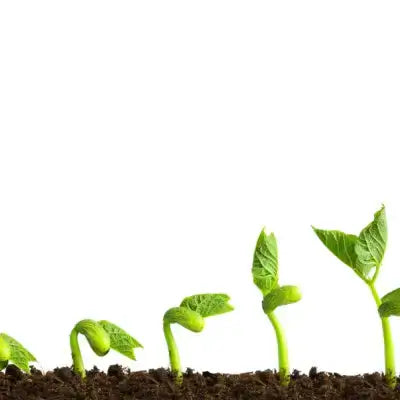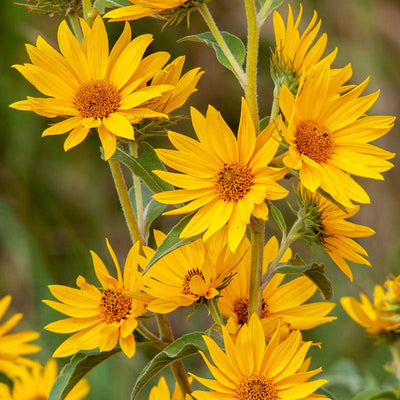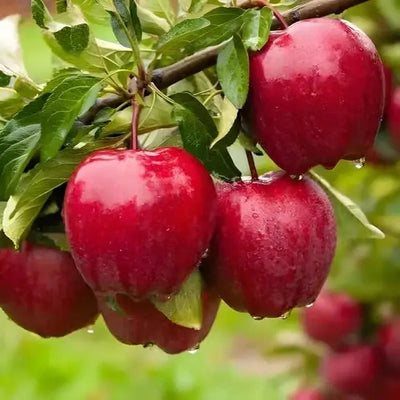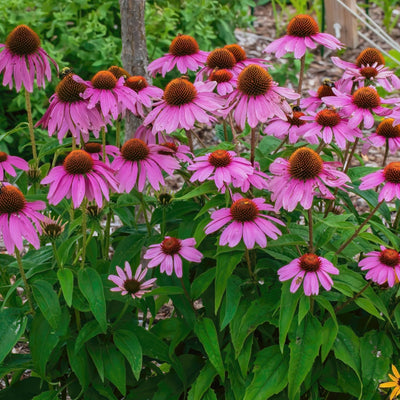The Secret Life of Plants: A Step-by-Step Guide to How Plants Grow
Consider the moment a child sows a minute seed in a patch of soil, watching as the small sprout moves to the surface in search of sunlight. Is it magic, or is it just nature? A seed, in due time, transforms into a seed-bearing plant, holding a special place in nature’s wonders. It is almost childlike to ask, "How does a plant grow and mature?"
The primary growth of a plant is intimately connected to its life cycle, much like how animals undergo life cycle changes. However, plants do everything at their own pace, at a much slower rate, performing a type of time waltz. Understanding this cycle not only nourishes curiosity but helps one become an efficient gardener, nurturing life from the ground.
The Plant Life Cycle
The plant life cycle can be counted in different ways, but the fundamental journey has always been the same. To demonstrate, we will follow the life of a sunflower (Helianthus annuus). It begins as a kernel and serves as an example of this beautifully unfolding process.
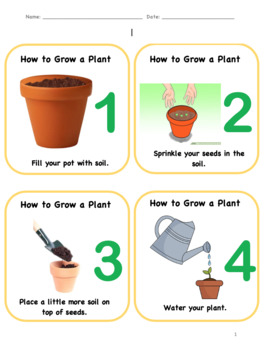
The Seed Stage
The journey starts with a seed: a complex life structure containing a miniature plant (embryo), protective coating, and its first food source (endosperm). A dormant, dry sunflower seed is a good example. It begins to come to life when it senses moisture, warmth, and sometimes light.
Germination
Awakening a seed can be magical. The process is simpler than it sounds, but moisture plays a crucial role. When moisture lingers, it fills tiny pores, causing the seed to swell and eventually break open. The first root, known as the radicle, establishes itself to anchor the plant while absorbing water and nutrients. The shoot, called the plumule, pushes upwards towards sunlight.
The Seedling Stage
At this phase, the plant is like a small child. The stem rises, and after a while, it pushes above the soil surface. The first leaves, called cotyledons, begin to grow, relying on sunlight and moisture. These leaves are oval-shaped and fragile, requiring protection during this delicate stage.
Vegetative Growth
Like a human in adolescence, a plant needs time to mature before flowering. During this phase, significant growth occurs, with the plant focusing its energy on building a reliable structure—strong roots and distinctive leaves. In the case of the sunflower, the leaves become heart-shaped. Over time, the plant grows thicker and produces more leaves to absorb sunlight. A lot of external growth happens during this stage.
Reproductive Stage (Budding and Flowering)
When the plant has matured under favorable conditions (appropriate daylight and temperature), it transitions from growth to reproduction. Buds begin to form, eventually blossoming into beautiful flowers. The sunflower’s characteristic large head is a fusion of many individual flowers. The flowering phase is critical for attracting pollinators like bees and other insects to assist in reproduction.
Fruit Production and Pollination
In sunflowers, the middle disk florets develop into the familiar striped seeds. The fruiting stage is more dramatic in other plants, like tomatoes, where the flower's ovary swells into the fleshy fruit that encases the seeds.
Seed Dispersal and Senescence
This stage marks the end of the plant’s life cycle. With the help of wind or animals, the seeds are dispersed. This is the senescence stage—aging, when the plant dies. Annual sunflowers produce seeds after flowering and dying, starting the life cycle anew.
Life cycles vary among plants. For example, tomatoes are annuals, while peonies are herbaceous perennials that survive the winter through their roots and regrow in the spring. Apple trees, classified as woody perennials, take decades to mature.

The Essentials for Thriving Plants
Understanding the plant life cycle means knowing the essential conditions plants need to thrive. Plants are alive and depend on the following elements:
-
Light: The source of energy for growth, the foundation of plant life.
-
Water: Crucial for maintaining structural integrity and transporting nutrients.
-
Air: Plants rely on carbon dioxide for photosynthesis and oxygen in the soil for root respiration.
-
Temperature: Each species has an optimal temperature range for growth, triggering stages like flowering.
-
Nutrients: Key minerals like Nitrogen (N), Phosphorus (P), and Potassium (K) are essential for healthy growth.
-
Space & Support: Adequate space for leaves to capture sunlight is vital for growth.
-
Time: Perhaps the most overlooked element—plants require time and nurturing.
Ready to Begin Your Plant Adventure?
Now that you understand how plants grow, it’s time to get started! What better way to learn this process than by creating your own garden?
Visit TN Nursery today to browse our wide selection of premium seeds, lively seedlings, and strong perennial plants. Our expert team has curated collections to meet every gardener’s needs, whether you’re a novice or a seasoned pro. Let us guide you in choosing your first plants, and embark on your own incredible growth journey!
FAQs
What is the life cycle of a growing plant?
Every living thing goes through a cycle, and similarly, a plant goes through five stages: seed (dormant), germination (active), seedling (delicate), vegetative (development), and reproductive (mature). The final stage is the plant’s full maturity, where it starts reproduction.
What are the 7 stages of a plant?
he seven stages of plant life—seed, germination, seedling, vegetative growth, budding, flowering, and fruiting—offer a detailed view of plant reproduction. This breakdown helps in understanding plants like bell peppers, where you can see the transformation from flower to fruit.
What are the four types of plant life cycles?
Life exists differently for all plants! The four main life cycle types are:
-
Annuals: Complete their life cycle in one year (e.g., Zinnias and Basil).
-
Biennials: Need two years to complete their cycle (e.g., Foxglove and Carrots).
-
Herbaceous Perennials: Die back in winter but regrow from their roots in spring (e.g., Hostas and Coneflowers).
-
Woody Perennials: Live for many years, such as trees and shrubs (e.g., Oak trees and Blueberry bushes).
What are the 5 stages of the plant life cycle?
-
Choose a location: Make sure your plant’s needs, such as sunlight, are met.
-
Prepare the soil: Mix and prepare the soil for planting.
-
Sow the seed: Place the seed in the soil, ensuring only the crown is covered.
-
Water the seed: Water deeply, ensuring the soil is well-soaked.
-
Prune and maintain: As the plant grows, prune and provide extra care to ensure its growth.
